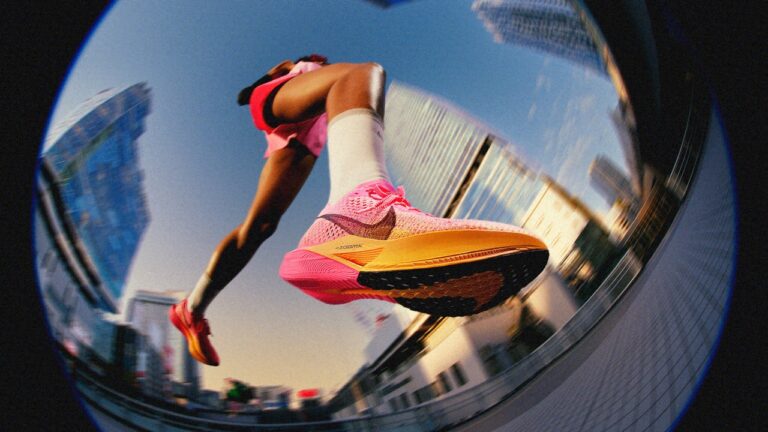When Nike debuted its Vaporfly 4% marathon shoe more than half a decade ago, the world of running changed. Records tumbled, laws were altered, and rivals scrambled to create their own “super shoes.” Fast-forward six years and every running brand has its own race shoe that combines a carbon fiber plate with a chunky wedge of foam to help propel runners forward.
From a local 5K to city marathons and mind-bending 100-mile world records, carbon-plated shoes grace the feet of elites at the front of the pack and amateurs shooting for a personal best. But despite super shoes from Saucony, Adidas, Asics, Brooks, and more, the Vaporfly is still among the most popular racing shoes.
Now Nike is giving the Vaporfly a revamp. This comes in the form of the ZoomX Vaporfly Next% 3—we’ll call it the Vaporfly 3, for ease. The pricey $250 (£235) shoes have a new, more sculpted look and are lighter than existing Vaporfly shoes. Nike also claims they return more energy than its previous versions—though precisely how much more isn’t clear. These changes are the first since the Vaporfly started to dominate race lineups in 2021.
Photograph: Nike
The biggest change to the Vaporfly 3 is its design. Nike’s designers have reshaped the midsole—carving away at the large chunk of foam. Triangular chunks of foam have been chipped away in the heel. A wedge of foam has been cut out of the side of the shoe, and another from the sole. The result is arguably not as sleek as the previous version, with a blockier look.
The changes were made to make the shoe lighter—potentially reducing the effort of each stride. Sporting equipment for elite athletes, who are generally looking to set records, is often made to be as lightweight as possible. “Every little component of the shoe is measured by weight,” says Elliot Heath, a senior footwear product manager at Nike, adding that “shaving away grams” across the shoe has reduced its weight by 4%. (A men’s US 10 is 198g, compared to the 215.7g for the Vaporfly 2).
Various parts of the shoe’s foam are covered with small ridges, reducing the amount of foam used across its surface. The Nike designer says that with these tweaks to the shoe, the company has also tried to make it more stable. That’s in response to a common complaint that the Vaporfly can feel wobbly and be tricky on corners.

